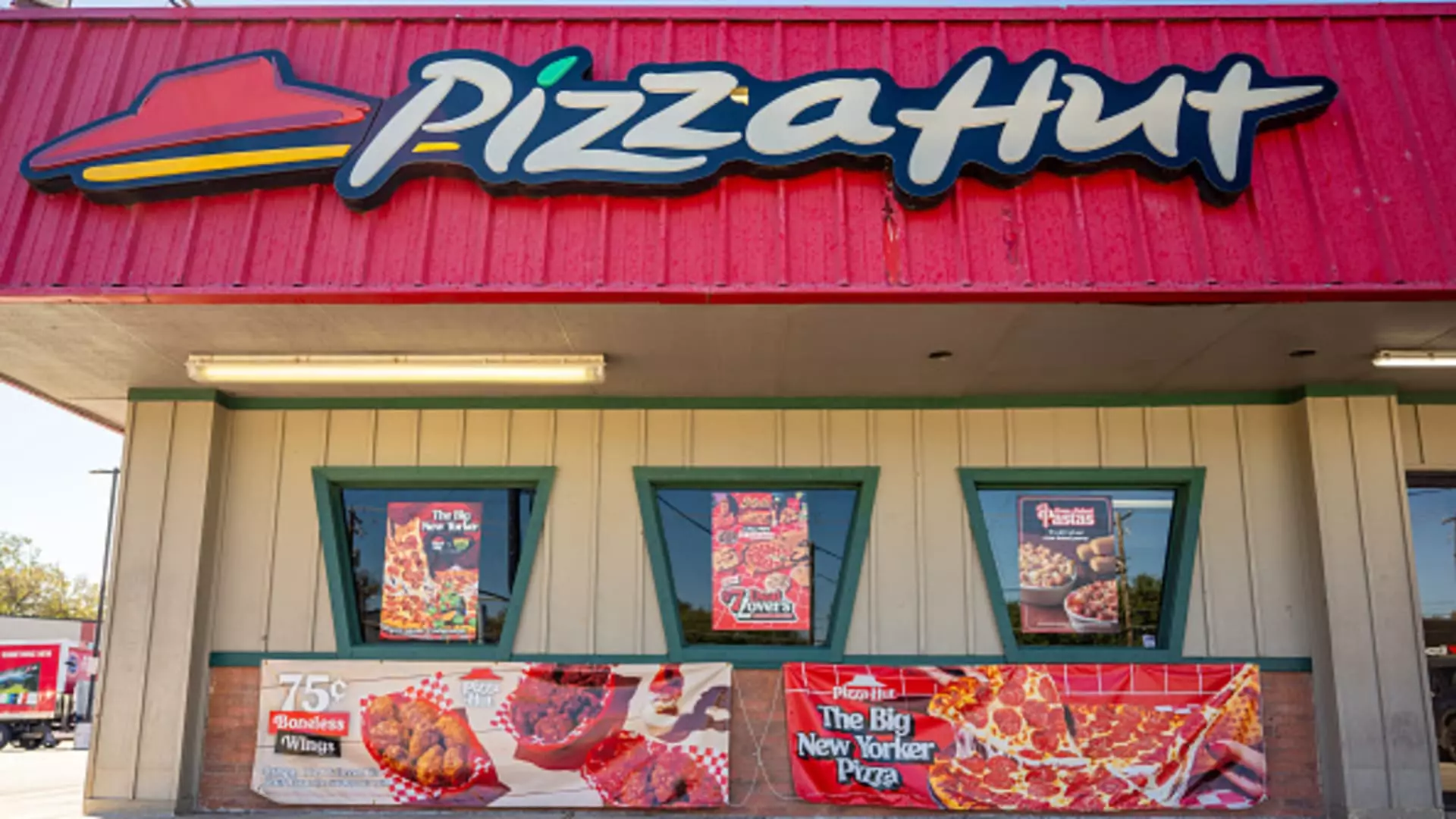In the ever-competitive landscape of fast food, Yum Brands has recently revealed mixed financial results that have left investors and stakeholders questioning its strategic direction. While the company posted an adjusted earnings per share of $1.30, slightly above analyst expectations of $1.29, the overall revenue of $1.79 billion fell short of the forecasted $1.85 billion. This discrepancy is troubling, indicating that Yum Brands might be experiencing a concerning gap between its ability to generate profit and its operational efficacy.
Pizza Hut: The Achilles’ Heel
If there is one glaring issue in Yum’s portfolio, it must be Pizza Hut. The iconic pizza chain has consistently underperformed, with same-store sales plummeting by 2%—far worse than the negligible decline that analysts had predicted. This is a stark contrast to the brand’s legacy and market perception, raising questions about its viability in a rapidly changing culinary landscape. The concerning 5% drop in U.S. sales coupled with stagnation in international markets signals an urgent need for a rejuvenation strategy. As the sector shifts towards healthier alternatives, Pizza Hut must innovate to reclaim its competitive edge or risk becoming irrelevant.
Taco Bell: The Beacon of Hope
In sharp contrast, Taco Bell continues to shine brightly within Yum’s portfolio, outperforming with 9% same-store sales growth against expectations of only 8%. This triumph suggests that consumers are increasingly drawn to Taco Bell’s unique and bold offerings, exemplifying how a brand can resonate with its target demographic. Taco Bell’s success story offers lessons on the importance of understanding market trends and catering to evolving consumer appetites, especially in an era demanding authenticity and creativity in menu offerings.
The Digital Imperative
Digital transformation is a crucial aspect shaping Yum Brands’ future. The fact that 55% of its sales now come from digital orders illustrates an essential shift in consumer behavior. Amidst a landscape that prizes convenience and efficiency, Yum’s heavy reliance on technology-driven sales aligns well with broader industry trends. However, having stellar digital numbers does not guarantee corporate health, and the company must ensure that its digital initiatives translate into long-term growth rather than merely serving as a temporary band-aid for underlying issues.
Leadership Transition: Uncertainty Ahead
The anticipated retirement of CEO David Gibbs in 2026 adds another layer of uncertainty for Yum Brands. As the company seeks a successor, the leadership transition could either usher in a revitalized strategy or exacerbate existing challenges. The urgency to adapt to market pressures cannot be overstated; if the incoming CEO does not possess a compelling vision for innovation and growth, Yum Brands could find itself lagging even further behind its competitors.
Yum Brands finds itself at a critical juncture marked by significant challenges. Failing to address Pizza Hut’s shortcomings, coupled with the need for a robust digital strategy and effective leadership transition, could dictate the company’s trajectory in the highly competitive fast-food sector.

